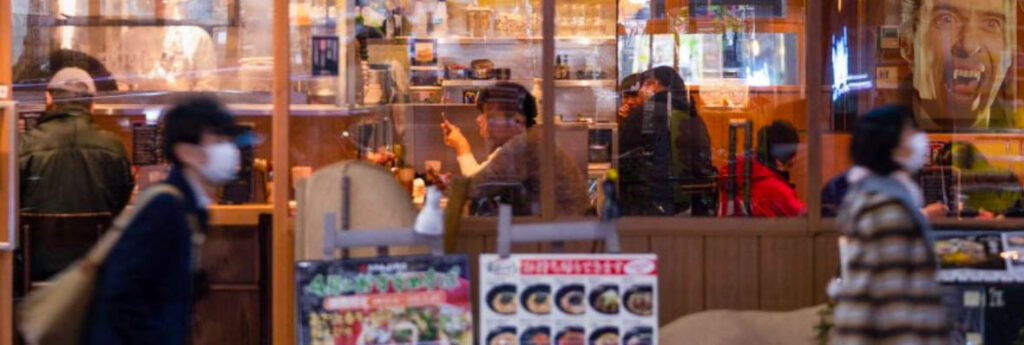Japan’s Prime Minister Yoshihide Suga announced Tuesday that he is extending a coronavirus state of emergency in Tokyo and nine other areas through March 7, amid growing uncertainty over the national rollout of vaccines and his instance on hosting the Tokyo Olympics this summer.
Suga said he will speed up vaccination plans and start inoculating a first group of medical workers in mid-February, instead of the earlier target of late February. The government says it will also expand testing.
Under the ‘state of emergency’, the government has issued non-binding requests for people to avoid crowds and eating out in groups, and for restaurants and bars to close by 8 p.m. Non-binding requests make little sense, there will always be people – large numbers of people – who simply ignore them. As for the closure of restaurants and bars by 8pm; does the government assume that COVID-19 has some vampire-like attributes that only come out after dark?
In addition, employers were asked to arrange for more of their staff to work from home.
Unlike Japan’s first emergency in April and May last year, schools, gyms, theatres and shops remain open, although some stores are voluntarily closing early.
Health minister Norihisa Tamura said the measures focus on narrow targets such as dining and service hours, in addition to basics such as mask wearing, handwashing and avoiding crowds. Here again that ludicrous time sensitive approach. Enjoy your lunch but skip dinner!
New cases have declined in Tokyo and nationwide since early January, but experts say hospitals remain flooded with serious cases and that preventive measures should remain in place.
Japan has had about 400,000 coronavirus cases, including 5,800 deaths.
The emergency will be lifted before March 7 in areas with significant improvements in infections and their medical system, though it will end Sunday as earlier planned in one prefecture, Tochigi north of Tokyo, where the situation has improved. It will remain in place in Tokyo and its neighbours Saitama, Chiba and Kanagawa, as well as in Osaka, Kyoto, Hyogo and Fukuoka in the west and Aichi and Gifu in central Japan.
About 80% of the cases in Japan are in the 10 prefectures under the emergency and the area needs to be under a close watch, Tamura said earlier Tuesday.
Suga took office in September and pledged to get the economy back on track while keeping coronavirus infections under control. He says he is determined to hold the Tokyo Olympics this summer. One has to think there is little chance of that.
He has promised to secure enough vaccines to cover Japan’s entire population of 127 million by June, but none has been approved yet.
Administrative Reform Minister Taro Kono, who is in charge of COVID-19 vaccines, raised concern Tuesday about the delayed distribution of European-made vaccines, saying Japan’s preparations have been affected by a lack of EU clarity.
“Our vaccine supply schedule has not been finalized even now,” Kono said.
Japanese officials have said they hope to launch inoculations with Pfizer vaccines, some of which are produced in the EU, starting with medical workers, then elderly people and others with underlying health conditions. The general public is not expected to receive vaccines until around June, and obtaining “herd immunity” ahead of the Olympics in July is considered unlikely, especially in a country known for vaccine skepticism.
Suga has faced criticism for delaying anti-virus actions until late December, when he finally suspended government-subsidized tourism and dining promotion campaigns. He was seen as too slow to act until local leaders pleaded for government leadership. The number of new daily infections and deaths roughly doubled over one month between November and December.
Support ratings for Suga’s government have nosedived in recent polls which showed public dissatisfaction with his handling of the virus.

